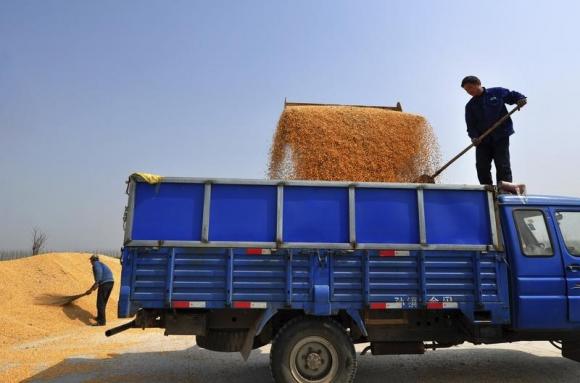 es appear set to dismantle the country’s years-old reserve-based crop price support mechanism and move toward a more market-based program designed to allow supply and demand to dictate the crop prices received by farmers.
es appear set to dismantle the country’s years-old reserve-based crop price support mechanism and move toward a more market-based program designed to allow supply and demand to dictate the crop prices received by farmers.Chinese authorities have used the national stockpiling program as a tool to promote widespread grain production within the country by purchasing crops off farmers at a minimum price and storing those reserves for use as a buffer during periods of output shortages.
But a recent string of comments from well-connected Chinese food policy experts suggests Chinese authorities may soon abandon the reserve program in favor of a more market-oriented system, on the assumption that markets should do a better job than rigid policies of making the country’s food production chain more efficient.
And certainly the reserve system has room for improvement. While the stocks purchases promoted high levels of grain production by providing price floors for farmers, they have also fueled persistent food and feed price inflation for consumers by keeping large portions of supply off the market.
Yet by committing to a market-based approach the Chinese authorities are risking introducing more volatility into the food production system rather than less, as farmers could well opt to cut back plantings of certain crops should market values slump below the cost of production, or produce too much of another crop if prices are attractive in the run-up to planting season.
ROOM FOR MANEUVER
The corn and soybean crops are the most obvious candidates for potential acreage shifts, as Chinese corn planted area hit a record high this year just as soy plantings sunk to a record low.
In fact, China’s massive corn needs are a major reason why the country’s inventory scheme was established in the first place, and the country’s large corn holdings remain a significant safety net for large industrial users of the grain even though local market prices remain above the international average.
So, given the potential for a steep drop-off in corn production should the inventory scheme be scrapped, users need to consider whether they will be better off fending for themselves amid a more market-oriented production environment or under the current inflation-causing reserve system.
In any event, all crop users in the country should brace for more crop price volatility as the new plans are charted out and discussed, as even the mere contemplation of an adjustment to such a key component of the Chinese food industry is likely to have widespread repercussions at the market level.


